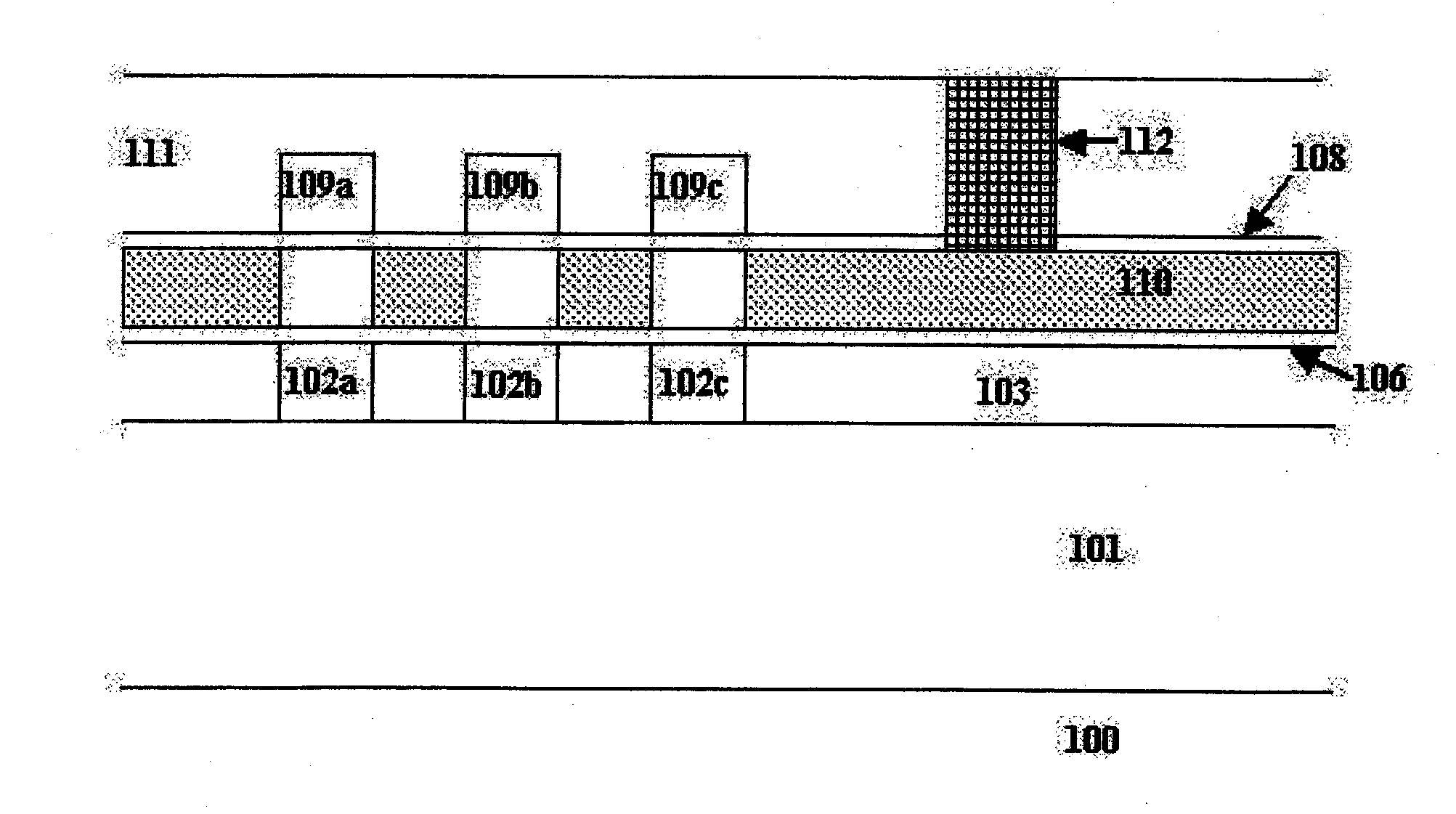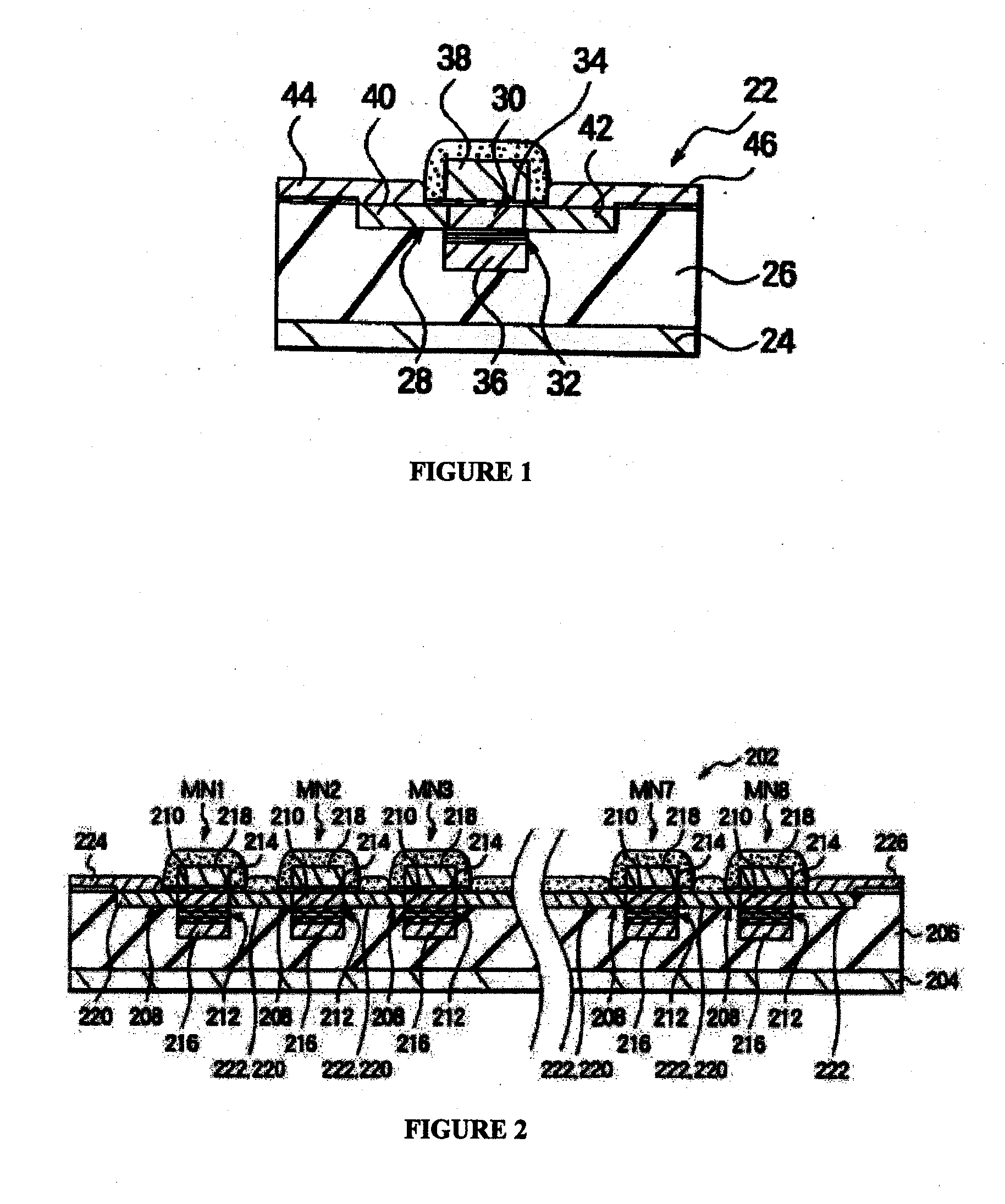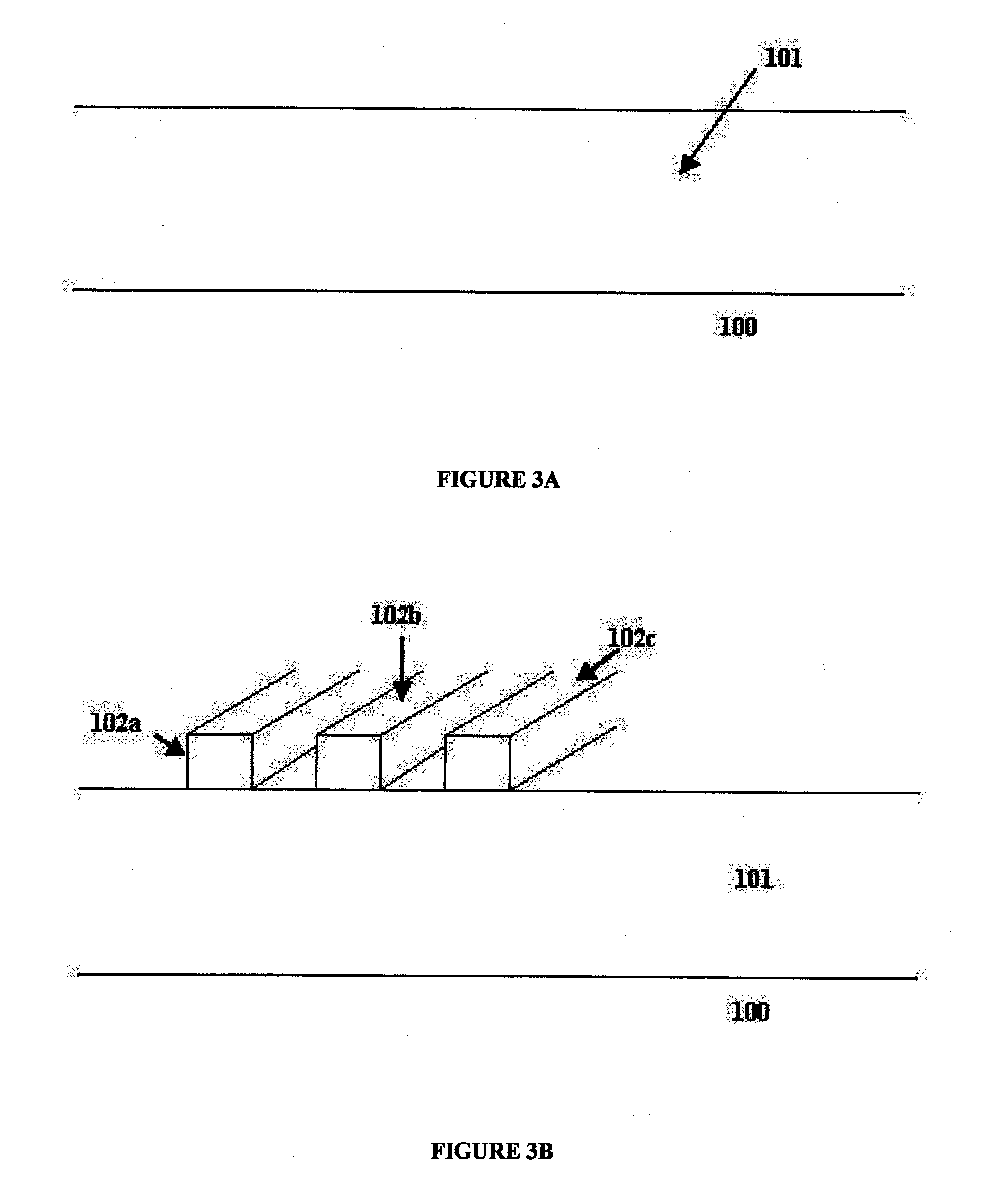Dual-gate device and method
a technology of dual gate electrodes and semiconductor devices, which is applied in semiconductor devices, instruments, electrical apparatus, etc., can solve the problems of difference in threshold voltage, difficulty in using this current to determine difficulty in determining the actual threshold voltage of the device being read, so as to avoid charge disturbance and high density
- Summary
- Abstract
- Description
- Claims
- Application Information
AI Technical Summary
Benefits of technology
Problems solved by technology
Method used
Image
Examples
Embodiment Construction
[0042] The present invention provides a dual-gate semiconductor memory device that is suitable for use in three-dimensionally stacked memory circuits to achieve high circuit density. Additionally, when used in a NAND-type non-volatile semiconductor memory device, a memory device of the present invention experiences only minor disturbs of stored electric charge during programming and reading.
[0043]FIGS. 3A-3L illustrate a method suitable for forming a NAND-type non-volatile semiconductor memory device, according to one embodiment of the present invention.
[0044]FIG. 3A shows insulating layer 101 provided on substrate 100. Substrate 100 may be a semiconductor wafer containing integrated circuitry for controlling a non-volatile memory. The semiconductor wafer may be either of a bulk type, where the substrate is made of a single crystal of semiconductor, such as silicon, or of a semiconductor-on-insulator type, such as silicon on insulator (SOI), where the integrated circuitry is made ...
PUM
 Login to View More
Login to View More Abstract
Description
Claims
Application Information
 Login to View More
Login to View More - R&D
- Intellectual Property
- Life Sciences
- Materials
- Tech Scout
- Unparalleled Data Quality
- Higher Quality Content
- 60% Fewer Hallucinations
Browse by: Latest US Patents, China's latest patents, Technical Efficacy Thesaurus, Application Domain, Technology Topic, Popular Technical Reports.
© 2025 PatSnap. All rights reserved.Legal|Privacy policy|Modern Slavery Act Transparency Statement|Sitemap|About US| Contact US: help@patsnap.com



